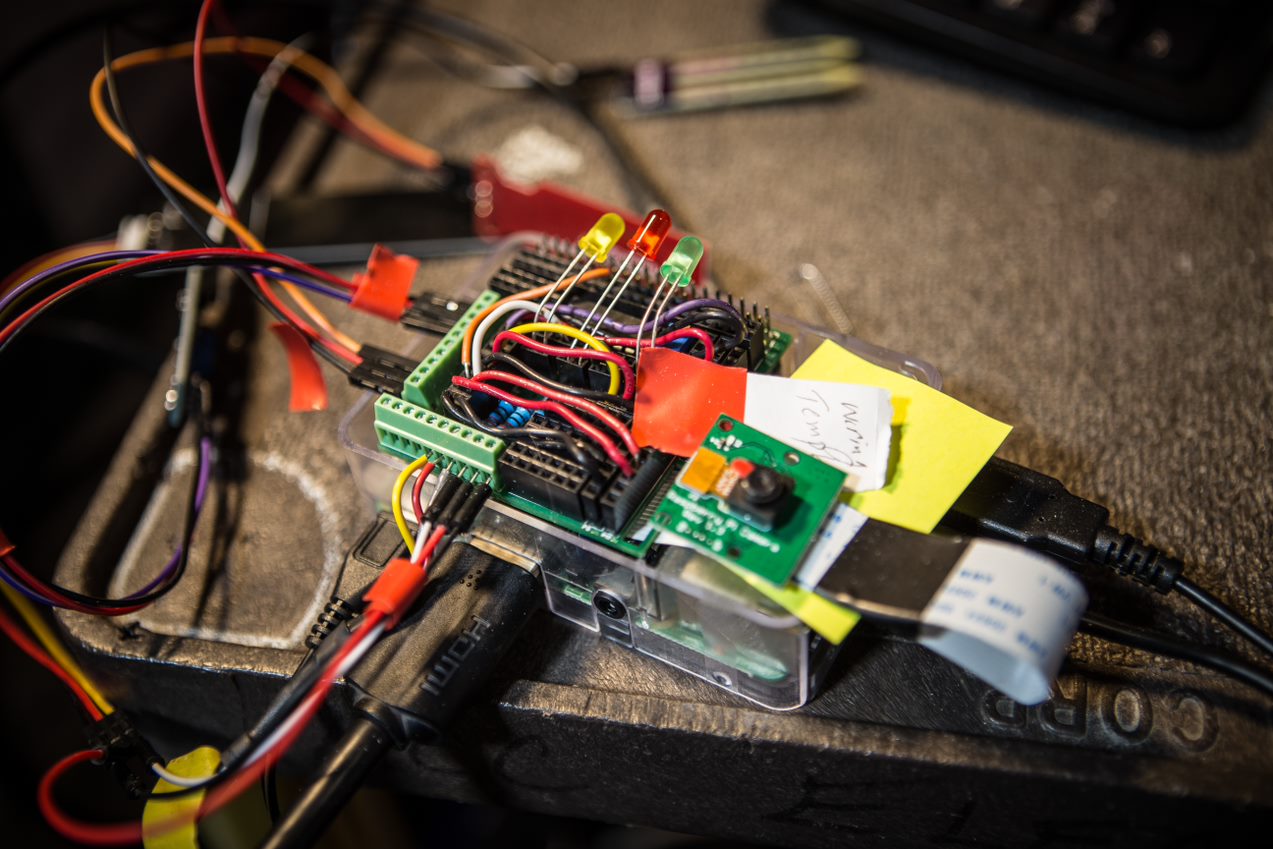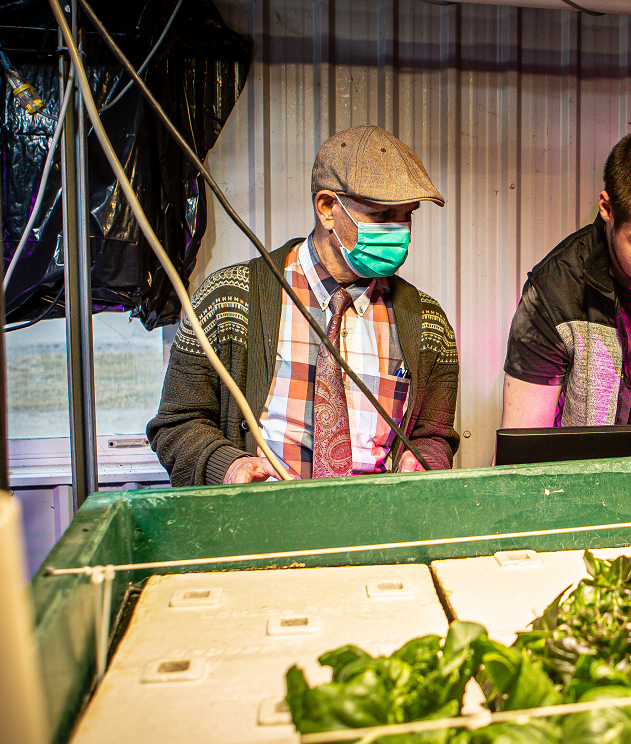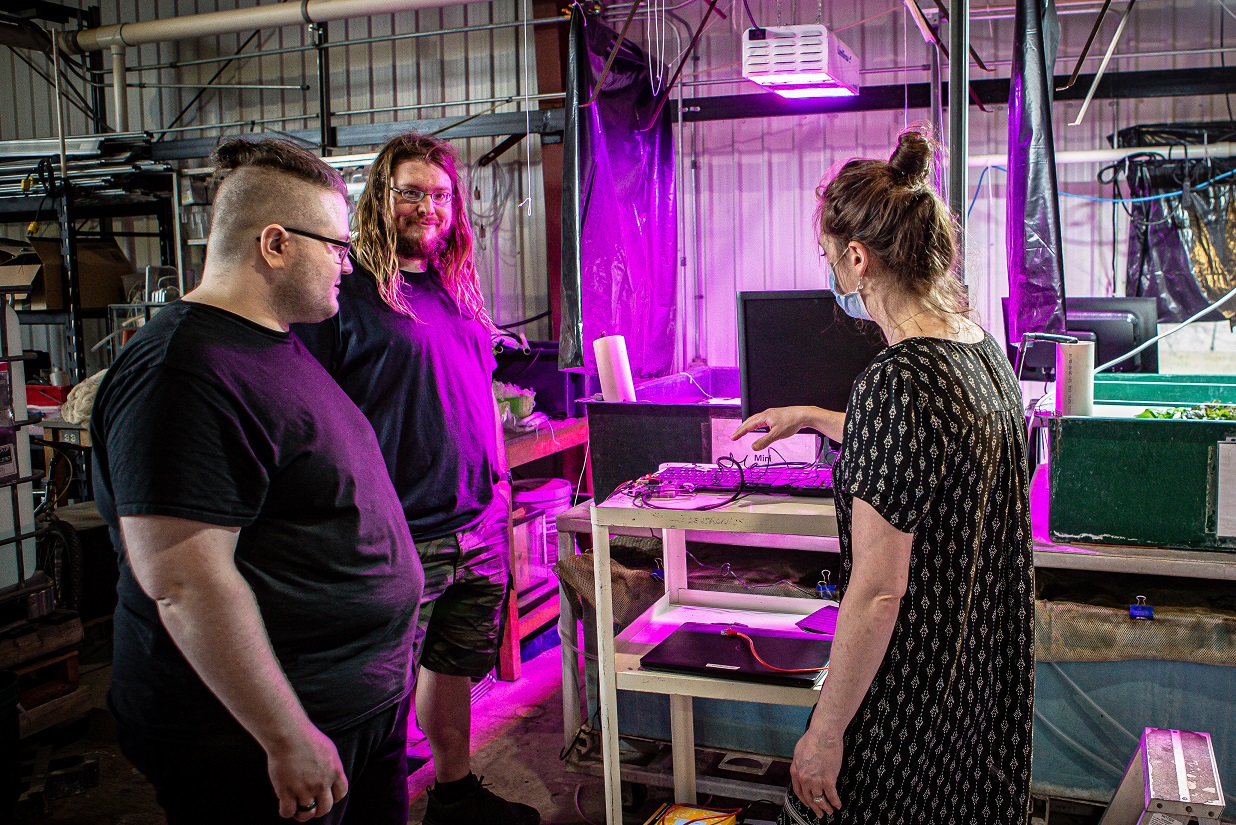
Huddling in front of a computer monitor, with fish tanks burbling a few metres away and small seedlings growing in adjacent trays, Lethbridge College Computer Information Technology (CIT) student Shealyn Cossette seems to be right in her element.
Cossette, who is completing her CIT diploma over three years as she waited out the pandemic, says the real-world conditions in the Aquaculture Centre of Excellence (ACE) provide a true test of the interfacing and networking skills she’s learning in class.
“It’s beautiful,” she says. “All of this is very real-life and industry-related.”
On this early spring day, Cossette is in ACE, instead of the usual computer lab. She and her classmates are working to connect a Raspberry Pi — a single-board, highly customizable computer about the size of a deck of cards — to a monitor, probes, router and wireless network. They’re testing these connections to ensure ACE scientists can access real-time data, directly or remotely, from the aquaculture system that runs 24 hours a day, every day of the year to keep both plants and fish healthy.
Students in the Computer Networking course aren’t the only students benefitting from this collaboration between ACE, which is part of the Centre for Applied Research, Innovation and Entrepreneurship (CARIE), and the CIT program, which is part of the Centre for Technology, Environment and Design (CTED). Two second-year CIT students were hired as paid research assistants to support the project, with funding from a Scholarly Teaching and Research (STAR) grant. Their work on the Scholarship of Teaching and Learning (SoTL) research project will also fulfil half of their 200-hour practicum requirement.

Research assistant Alec Anonson worked on the programming side of the project, writing and testing the Python programming language that can, among other things, send a real-time photo from ACE to wherever a member of the ACE team has internet connection.
Research assistant Keelan Hyde worked on the hardware, customizing the Raspberry Pi board to connect to other elements including data-collecting probes, and a series of LED lights to show the system is online and working. There’s space on the board to add another sensor if ACE’s needs change.
“This is an opportunity to implement what we’ve been learning in a real-world situation,” Hyde says.
The prolific use of Raspberry Pi to power the internet of things also makes these practical experiences highly valuable to students.
“This reinforces and expands on the knowledge we acquired in class,” Anonson says.
The programming and hardware involved in this project owe much to the expertise of Shoja Mazidi, a CIT instructor. As part of the SoTL project, his students were invited to participate in a survey after their time in ACE to measure whether their learning and experience were enhanced by their work on the Raspberry Pi devices. If that proves to be the case, Mazidi says he hopes he can incorporate Raspberry Pi in the curriculum because the applications are nearly limitless.
This collaboration also provides a solution to a real-world problem for ACE, which has gone through other systems for monitoring water acidity, dissolved oxygen, temperature and water levels, says ACE research assistant Kristine Wilson. As technology grows less expensive, solutions can also be more flexible when coupled with the right expertise. The ACE team wanted to go to a Raspberry Pi system but needed the right partner with the technical knowledge to make it happen, she says.

Of the participating CIT students, 40 completed a survey about their learning experience in ACE. An overwhelming 97.5 per cent of respondents agreed or strongly agreed their learning experience was enhanced by Raspberry Pi. Ninety per cent also agreed or strongly agreed that working with the devices and sensors in ACE enhanced their learning experience. Not a single student disagreed to either question.
Most students said they want to see the device used in other CIT courses.
The researchers plan to share more of their findings and recommendations later this year.
The SoTL research findings may help pave the way for ongoing collaboration between CIT and ACE, and create more work-integrated learning opportunities for CIT students in other areas of the college seeking a customizable tech solution. Gurpreet Singh, a CARIE researcher, and Dr. Nick Savidov, ACE senior research scientist, have also had a lead hand in this collaborative venture.
“Raspberry Pi is a learning tool, we are an educational institution, and we have a need that could support collaboration that would benefit both industry-driven research and students,” Wilson says. “So it didn’t take much to have us commit and move forward and apply for the SoTL grant with Shoja to initiate what we are hoping is a long-term relationship with CIT.”